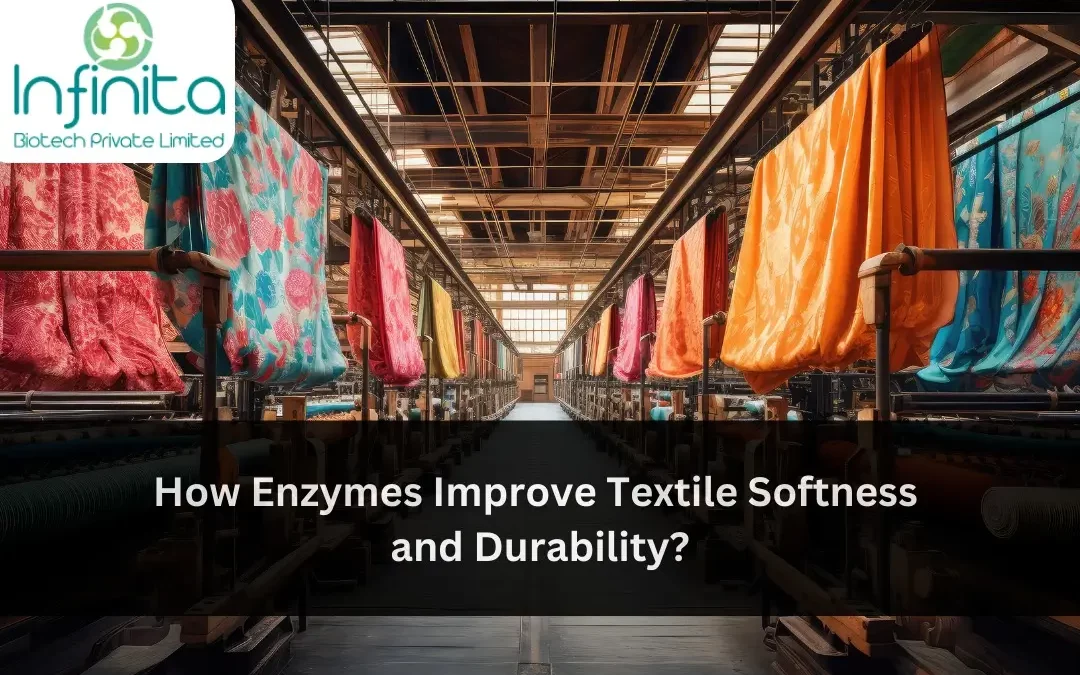Introduction: The Intersection of Science and Fabric Care
Fabrics surround us, shaping how we look, feel, and move through the world. But achieving the perfect blend of softness and durability in textiles has always been a challenge. This is where enzymes step in—quietly revolutionizing the way fabrics are processed and cared for. By combining precision science with environmental mindfulness, enzymes are paving the way for textiles that are softer, stronger, and more sustainable.
What Are Enzymes in Textile Processing?
Enzymes are biological catalysts, naturally derived from microorganisms. In textile processing, they work like skilled artisans, targeting specific components of fibers without harming the fabric itself. Unlike harsh chemicals, enzymes operate with surgical precision, ensuring that only the intended materials are modified or removed. Their ability to deliver superior results with minimal environmental impact has made them the gold standard in modern textile care.
Understanding Textile Softness and Durability
Factors Influencing Fabric Softness
Softness in textiles is determined by factors such as fiber type, weave density, and surface smoothness. Excess fuzz or residual impurities often diminish the tactile appeal of fabrics, making them feel coarse or rough.
The Durability Dilemma
Durability, on the other hand, hinges on the strength and elasticity of fibers. Traditionally, improving one often meant compromising the other. The challenge lies in achieving lasting softness without weakening the structural integrity of the fabric.
Key Enzymes Used in Textile Processing
Cellulases: Smoothing Fiber Surfaces
Cellulases break down tiny fibrils on the surface of cotton and other cellulosic fabrics, eliminating pilling and creating a smoother, softer hand feel.
Amylases: Eliminating Residual Starches
Starches are commonly used during weaving to strengthen fibers. Amylases remove these residues post-production, leaving the fabric cleaner and softer.
Proteases: Perfecting Protein-Based Fibers
For wool and silk, proteases gently modify the protein structure, reducing roughness while preserving natural strength and sheen.
Lipases: Tackling Oily Residues
Lipases specialize in breaking down fatty or oily residues that may linger on synthetic or blended fabrics, enhancing cleanliness and softness.
The Science Behind Enzyme Action in Textiles
Enzymes work by catalyzing specific reactions at the molecular level. For example, cellulases selectively hydrolyze cellulose chains, smoothing out rough fibers without degrading the fabric. This targeted approach ensures that the fabric remains intact while its softness and durability are enhanced. The result is a delicate yet transformative treatment that balances precision with effectiveness.
Benefits of Using Enzymes in Textile Softening
Environmental Advantages
Enzymatic treatments reduce water usage, energy consumption, and chemical pollution, making them an eco-friendly alternative to traditional methods.
Enhanced Fabric Quality
Enzymes improve the hand feel of textiles, making them more comfortable to wear. Additionally, they enhance fiber resilience, ensuring that fabrics maintain their softness and strength over time.
Improved Dyeing and Finishing
By cleaning and refining fabric surfaces, enzymes enable better dye penetration, resulting in more vibrant and long-lasting colors.
Enzyme Applications in Different Textile Types
Cotton: Smooth and Resilient
For cotton fabrics, cellulases effectively remove pilling and improve softness, making everyday garments like T-shirts and bedsheets more comfortable.
Wool and Silk: Soft yet Strong
Proteases refine the texture of wool and silk, reducing scratchiness while maintaining the integrity of these delicate fibers.
Synthetics: Taming Artificial Textures
Lipases address the challenges of synthetic fabrics like polyester, enhancing their tactile appeal and ensuring they feel less artificial against the skin.
Challenges in Enzyme-Based Textile Treatments
Optimization for Varied Fabrics
Different textiles require specific enzyme formulations and conditions. Achieving consistent results across diverse fabric types can be complex.
Consumer Perceptions
Some consumers associate enzymes with industrial processes, raising concerns about safety or naturalness. Clear communication about their natural origins and benefits can help dispel these misconceptions.
The Future of Enzymes in Sustainable Textile Care
Innovations in Enzyme Engineering
Advancements in enzyme technology are opening up new possibilities, such as enzymes tailored for low-temperature processes or for breaking down synthetic microfibers.
Supporting Circular Fashion
Enzymes are playing a critical role in sustainable fashion by enabling textile recycling and reducing the environmental footprint of garment production.
Conclusion: Redefining Fabric Quality with Enzymes
Enzymes have fundamentally changed the landscape of textile care. By improving softness, enhancing durability, and supporting sustainable practices, they offer a transformative solution to the challenges of modern fabric production. As technology continues to advance, enzymes will remain at the heart of innovations that redefine how we experience and care for textiles.

